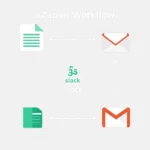7 Automation Hacks for Beginners That Save Hours Every Single Week

Why You Need Automation Hacks in Your Life
If you’ve ever ended a week wondering, “Where the heck did my time go?”, I feel you. Between posting on socials, chasing emails, scheduling calls, and wrestling with spreadsheets, your days can vanish like socks in a dryer.
Here’s the thing: most of that time-suck isn’t because you’re bad at managing time. It’s because you’re still doing repetitive stuff manually. Ouch.
That’s where automation hacks for beginners swoop in. They’re like little robots that live in your laptop, happily doing the boring work so you can focus on creating, connecting, or binge-watching The Great British Bake Off guilt-free.
So grab a coffee (or three), and let’s break down seven automation hacks with step-by-step walk-throughs, prompts you can literally copy-paste, and real-world examples. By the end, you’ll have hours of your life back, and probably wonder why you didn’t start sooner.
Hack 1: Schedule Social Posts in Bulk
Posting daily eats up serious brainpower. You sit there like, “What should I say today?” Then you spiral into Canva designs, hashtags, and boom, half your morning is gone.
Solution. Batch-schedule your posts with tools like Buffer, Later, Hootsuite, or Hopper HQ.

Walk-through:
1. Pick your main platform (Instagram, Twitter/X, LinkedIn, Facebook).
2. Open a scheduling tool (Buffer’s free plan is a good start).
3. Set aside one focused hour per week.
4. Write 5–7 posts in one sitting, stick to themes like tips, quotes, or stories.
5. Upload visuals and captions.
6. Schedule them out for the week.
Prompt Idea (for ChatGPT):
“Generate five evergreen social media posts for [your niche] that can be reused every few months. Keep them short, engaging, and easy to schedule in bulk.”
Real-world Example:
A travel blogger spends Mondays drafting four Instagram captions and pairing them with scenic shots. Using Later, she schedules them across the week. By Wednesday, instead of stressing about posts, she’s free to brainstorm her next trip.
Pro tip: Recycle posts. Evergreen content (quotes, tips, how-tos) can be scheduled every couple of months, saving even more time.
Hack 2: Automate Email Follow-Ups

Still typing every follow-up email by hand? That’s like washing clothes in a river when there’s a washing machine right there.
Solution: Set up automated email drip sequences in MailerLite, ConvertKit, or Mailchimp.
Walk-through:
1. Pick your email tool.
2. Create an opt-in form (offer a freebie if you want).
3. Draft 5 short emails:
o Day 1: Welcome message
o Day 3: Quick tip
o Day 5: Story with a lesson
o Day 7: Extra value (like a checklist)
o Day 10: Light next step
4. Load them into your platform.
5. Add triggers (send after signup).
6. Test it with your own email.
Prompt Idea (for ChatGPT):
“Write a 5-part email sequence for beginners learning [your niche]. Each email should be short, friendly, and build trust, ending with a gentle next step.”
Real-world Example:
A new food blogger sets up a “7-Day Meal Prep Tips” welcome sequence. Every subscriber automatically gets value-packed emails, and the blogger’s open rates climb, without sending a single manual message.
Hack 3: Use ChatGPT to Create First Drafts
Writing everything from scratch? Exhausting. Let AI handle the grunt work.
Solution: Use ChatGPT (hi, that’s me) or another AI to create outlines, captions, and drafts. Then you sprinkle on your personality.
Walk-through:

1. Open ChatGPT.
2. Input a clear prompt (topic + audience + length).
3. Ask for an outline first.
4. Expand into a draft.
5. Edit it to sound like you.
Prompt Idea (for ChatGPT):
“Create a 500-word blog draft on [topic] for [audience]. Keep it casual, friendly, and add humor.”
Real-world Example:
A marketer asks ChatGPT to “Write 10 Instagram captions about productivity hacks for beginners.” Boom, she gets a list in seconds, tweaks a few lines, and schedules them. Time spent: 15 minutes. Time saved: hours.
Pro tip: Don’t just accept AI output. Use it as a rough sketch, then refine.
Hack 4: Set Up Automated Calendar Bookings

Few things scream “time-drain” louder than back-and-forth emails trying to find a time for a call.
Solution: Use Calendly or Acuity. People book straight into your available slots.
Walk-through:
1. Create a free Calendly account.
2. Sync it with Google Calendar.
3. Set your availability (e.g., Mon–Fri, 9am–2pm).
4. Copy the booking link.
5. Add it to your email signature and socials.
Prompt Idea (for ChatGPT):
“Draft a warm and professional email confirmation someone receives after booking a call. Include what they should bring or prepare.”
Real-world Example:
A life coach pastes her Calendly link into her email footer. Instead of spending 30 minutes arranging each appointment, clients just book themselves. She saves about 2–3 hours every week.
Pro tip: Automate reminders, too. Calendly can email or text clients before the meeting, fewer no-shows.
Hack 5: Use Zapier or Make for Cross-App Triggers
Ever found yourself copying data from one app to another? Painful. Let apps talk to each other automatically.
Solution: Use Zapier or Make to connect tools.
Walk-through:

1. Sign up for Zapier.
2. Pick a trigger (e.g., “new form entry”).
3. Pick an action (e.g., “send Slack message”).
4. Build one workflow (a “Zap”).
5. Test it.
6. Turn it on.
Prompt Idea (for ChatGPT):
“Give me 5 beginner-friendly Zapier automations for someone using Gmail, Google Sheets, and Slack.”
Real-world Example:
A freelance designer sets up: “When a new client fills my intake form → Zapier adds their info to a Google Sheet → sends me a Slack alert.” She never misses a lead, and her workflow stays tidy.
Pro tip: Start simple, one or two Zaps max. Once you see the magic, you can build more.
Hack 6: Create Recurring Task Templates

Re-setting the same checklist every week is a time thief.
Solution: Use tools like Trello, Notion, or Asana to build reusable templates.
Walk-through:
1. Choose your project tool.
2. Write out your repeatable workflow (e.g., publishing a blog).
3. Create a checklist template.
4. Save it as a reusable board.
5. Duplicate it whenever you start a project.
Prompt Idea (for ChatGPT):
“List a reusable 7-step checklist for publishing a weekly blog post, from draft to promotion.”
Real-world Example:
A small team sets up a Trello board with cards: Write Draft → Edit → Design Graphic → SEO Check → Schedule Post → Share on Socials → Email List. Every week, they just duplicate the board. No reinventing the wheel.
Hack 7: Automate Reporting with Dashboards
Manually copying data into spreadsheets? Hard pass.
Solution: Use dashboards like Google Data Studio (Looker Studio) or AgencyAnalytics to auto-update your metrics.
Walk-through:

1. Sign into Google Data Studio.
2. Connect Google Analytics (website traffic).
3. Connect your email platform (subscriber numbers).
4. Pick 2–3 key metrics you actually care about.
5. Save and bookmark your dashboard.
Prompt Idea (for ChatGPT):
“Explain step-by-step how to create a Google Data Studio dashboard that tracks blog traffic and email subscribers.”
Real-world Example:
A food blogger links Google Analytics + MailerLite to a dashboard. Every Monday morning, they sip coffee and glance at one page showing all their numbers, no more copy-pasting.
Pro tip: Don’t track everything. Just the metrics that help you make decisions.
Final Thoughts: Start Small, Scale Up
There you go, seven automation hacks for beginners that free up hours every single week. To recap:
• Schedule your social posts.
• Automate your email sequences.
• Use AI for first drafts.
• Let Calendly handle bookings.
• Build simple Zapier workflows.
• Create reusable templates.
• Automate your dashboards.
Your challenge: Pick just ONE hack to try this week. Clock how much time it saves. Then brag (to yourself or your cat) about being smarter, not busier. Next week, add another hack. Before long, your schedule will feel lighter, your tasks cleaner, and your weekends, yours again.
Automation isn’t about being lazy, it’s about making your systems work for you. You’ve got this.
